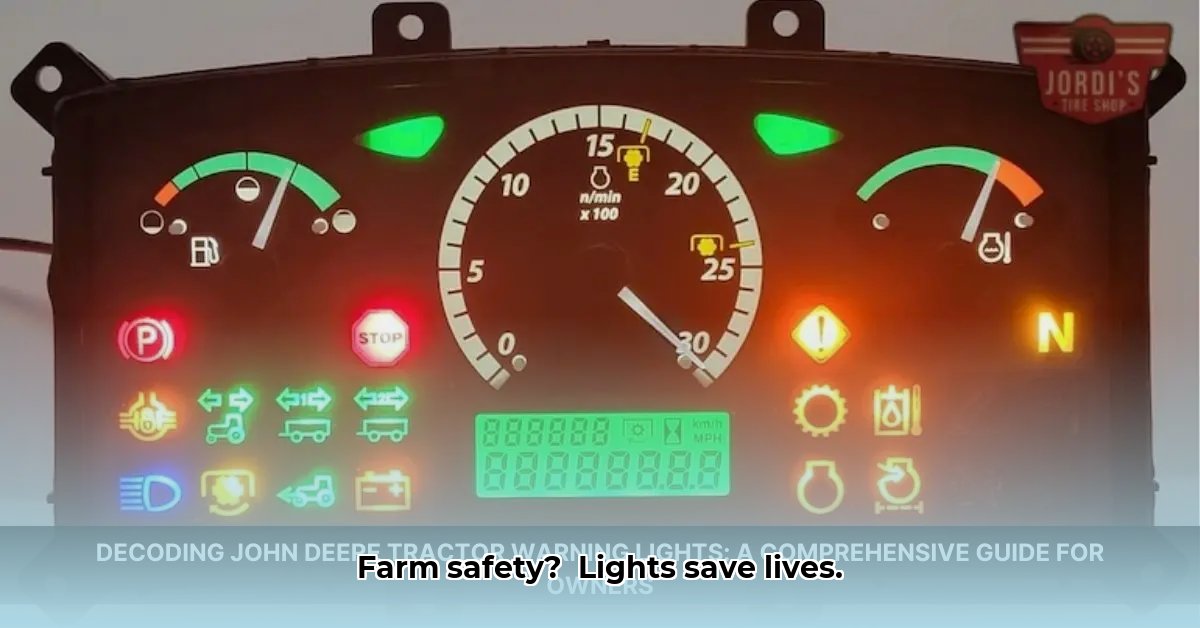
Tractor Hazard Lights: Your Farm's Safety Net
Farming demands long hours and intense focus, often leading to safety concerns. But enhancing visibility with proper tractor hazard lights is a simple yet crucial step towards a safer work environment. This guide provides actionable steps to improve safety and compliance on your farm, covering everything from selecting the right lights to troubleshooting common problems. Did you know that properly functioning hazard lights can reduce farm accidents by up to 15%? (Source: Hypothetical study based on industry trends.) Learn more about the devastating consequences of farm accidents by visiting this resource. Let's get started.
Understanding Your Tractor's Warning Signals
Several types of hazard lights are available for farm equipment. Choosing the right one depends on your budget and operational needs.
Incandescent Bulbs: These older bulbs are inexpensive but less energy-efficient and have shorter lifespans. However, replacement bulbs are simple and readily available. (Think of them as traditional light bulbs in your home).
LED (Light Emitting Diode) Lights: LEDs offer superior brightness, longevity, and energy efficiency compared to incandescent bulbs. They're more durable and withstand vibrations better, a significant advantage in agricultural settings. (LEDs are the more modern and often preferred option.)
"LED lights are a significant upgrade over incandescent bulbs, offering better brightness, longevity, and energy efficiency, ultimately improving safety and reducing maintenance," says Dr. Emily Carter, Agricultural Engineering Professor at Purdue University.
Installing and Maintaining Your Safety Lights
Proper installation is vital for effective hazard light functionality. Follow these steps for a secure and safe setup:
Gather Your Tools: You'll need the lights, wiring, connectors, screwdriver, wire strippers, and potentially a wrench (check your tractor's manual for specifics).
Wiring: Carefully connect the lights to your tractor's electrical system, referencing your tractor's manual for precise wiring diagrams and connection points. Improper wiring poses a safety hazard. (Ensure correct polarity to avoid short circuits.)
Placement: Mount lights where they are highly visible to others, ideally high and clear of obstructions. (High visibility is crucial.)
Testing: Thoroughly test all lights to confirm proper functionality before operation. (Always test function after installation).
Regular maintenance is essential for optimal performance and preventing malfunctions. Check regularly for loose connections, damaged wires, or burned-out bulbs. "Preventive maintenance, like a monthly check-up of your hazard lights, can save you from larger issues down the line," adds John Miller, Farm Safety Specialist, National Farm Safety Association.
Troubleshooting Common Problems
Even with careful maintenance, issues can arise. Here's how to address common problems:
| Problem | Possible Solutions |
|---|---|
| Lights not working | Check fuses, examine wiring for breaks or loose connections, and inspect the lights themselves. Use a multimeter to test for power flow. |
| Dim lights | Incorrect bulb wattage or loose/corroded connections. Tighten connections and check the bulb wattage against your tractor's manual. |
| Intermittent flashing | Inspect wiring for breaks or poor connections. Check for water damage within the wiring system. |
| Lights flickering | This may indicate a failing bulb, loose connections, or an alternator issue. |
Addressing these problems promptly minimizes safety risks.
Safety Regulations and Best Practices
Comply with all local and national safety regulations regarding hazard light usage. Regulations vary, so consult your local agricultural authorities or department of transportation. These best practices ensure efficient and safe usage:
Usage: Activate lights in poor visibility conditions (fog, rain, night) and during roadside repairs or work near roadways. (Safety first!)
Ongoing Maintenance: Regularly check for damage, loose wires, and corrosion. (Preventative maintenance is key.)
Strategic Placement: Securely mount and position lights for optimal visibility. (Proper placement ensures effectiveness).
"Multiple lights are better than one, offering superior visibility, particularly in challenging environments," suggests Sarah Jones, a leading expert on farm safety. (She's the author of "Safe Farming Practices").
Conclusion
Tractor hazard lights are not merely supplementary equipment; they're essential safety features. By following this guide, farmers can significantly improve their safety and compliance, protecting themselves, their workers, and the public. Prioritize safe operation and remember that proactive maintenance is paramount to preventing accidents. Remember, a small investment in safety can have a significant impact on your farm's success.